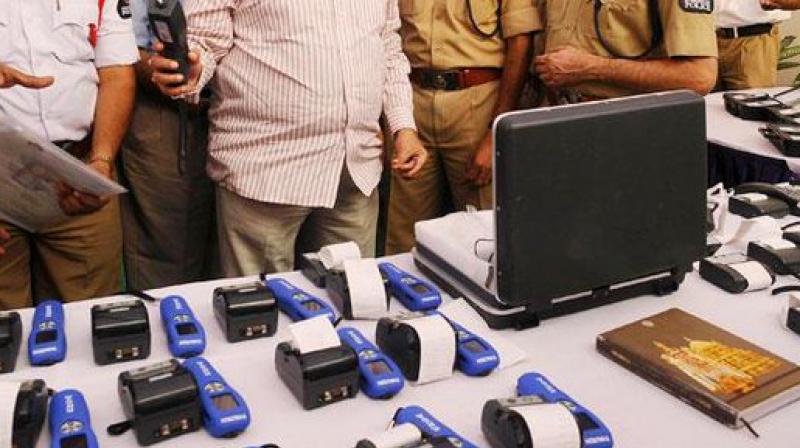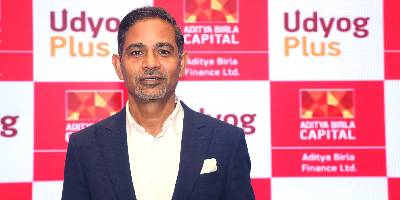- ●एस.बी.आई के बाद पी.एन.बी बना दूसरा बड़ा बैंक, सरकारी बैंकों की संख्या घट कर हुई १२
- ●केरल में लहराया पाकिस्तानी झंडा, ३० से ज्यादा छात्रों पर मुकदमा दर्ज
- ●यूपीएससी २०१९ मेन्स परीक्षा के एडमिट कार्ड जारी, ऐसे करें डाउनलोड
- ●हरतालिका तीज व्रत और पूजन तिथि
- ●अमृता प्रीतम की १००वीं जयंती आज
- ●बेरोजगारों के लिए योगी सरकार लगा रहीं रोजगार मेला
- ●महाराष्ट्र के एक केमिकल फैक्ट्री में आग, ८ लोगों की मौत
- ●असम : गृह मंत्रालय ने जारी की एन.आर.सी की फाइनल लिस्ट
Traffic Police Introduces e-Challan, Violaters Can Make E-Payment

Mumbai Traffic Police has embarked on a path breaking process to revolutionize the way fines are collected from violators of laws related to motor vehicles. For the first time Mumbai Traffic Police will be engaging in complete cashless process to collect fines from offenders through e-Challans.
What is e-Challans?
With 27 lakh vehicles in Mumbai, on an average about 20 lakh cases are annually booked by the Mumbai Traffic Police. Till now fines were collected in cash from the offenders for which the traffic personnel would issue a manually written receipt. The fines collected would then be deposited in the state treasury. With the introduction of e-Challans, cash transactions has completely eliminated collection of fines by the Mumbai Traffic Police. By all standards e-Challans is the most transparent, accountable and convenient system.
How will e-Challan be issued?
Mumbai Traffic police personnel will be armed with a trendy hand-held wireless device, almost similar to the Nokia Communicator. Traffic police, on finding a violation, would submit the registration number of the vehicle and licence number of the driver in the device. The said offence would be entered in the device to produce a e-Challan. Traffic personnel is only empowered to enter the offence, while the device program generates the corresponding fine, thus eliminating any scope for compromise. This is a transparent system as the motorists know the offences for which they are being booked and the exact amount to be paid.
How to pay the fines?
As cash transactions have been completely eliminated, motorists could pay the fines through credit and debit card as the hand held device in the possession of traffic personnel also works as swipe machines, similar to ones in shops and malls. The motorists swipes the card, enter the details and the fine is paid. Similar to the card swipe machines, a printed receipt with relevant details is issued to the motorists.
As e-Challan caters to one and all, even with those without credit and debit card, could still pay the fine without cash. The motorists could use the device for payment of the fine amount through internet banking. Other payment options of e-wallets, mobile payments, etc could also be availed. Further, in case where motorists do not have access to the above payment channels, then traffic personnel will issue a temporary licence (L-Temp) and direct the motorists to pay the fine within 15 days. The L-Temp holders could pay the fine through internet banking, designated outlets, banks, etc. For taxi drivers and auto rickshaw drivers, online payment gateways would be made available at some of their union offices to pay the fines.
What happens if the motorists fail to pay within 15 days deadline?
From the 16th day onwards, a penalty of Rs 10 per day would be imposed for delay in payment. This penalty may go up to Rs 1000. In case of unpaid fines for long durations, Mumbai Traffic Police will take stern action to recover the fine along with the penalty.
Is it possible to escape paying the fine after issuance of e-Challan?
The answer is no. It is practically not possible to escape paying the fine once the e-Challan has been issued. Earlier, there have been instances, where after impounding of licences, motorists have falsely reported to the police losing their licence and then getting a duplicate licence issued from Regional Transport Office. The fraudulent practice will now come to an end, as records of fines will be uploaded to database that will be accessed by the police station and Regional Transport Office. The police station could verify if the licence has been impounded or genuinely lost before lodging a report for the same. Even in case of loss of licence, the RTO will issue a duplicate only after clearing of pending fines, if any. Similarly, for transport vehicles, the renewal of permits by RTO will be subject to payment of pending fines issued by the Mumbai Traffic Police. Fines have to paid, earlier the better.
Is cashless transaction the only benefit of e-Challans?
Mumbai Traffic Police has made extensive use of technology for improving movement of traffic in Mumbai. On one hand e-Challans would eliminate cash transactions, on the other it will also improve traffic discipline. The hand held devices is also connected to central data base of Vahan for checking vehicle registration and Sarathi for checking driver’s licence. The moment vehicle registration number and driver’s licence numbers are entered, any previous offences involving the vehicle, the driver or both would be displayed on the screen. Repeat offenders will be paying escalated fines or face stern action such as impounding of licence, suspension of licence and cancellation of licence as a last resort. Moreover, the device will also reveal payment history of fines for previous offences, in case, fines have not been paid, the same could be recovered from the motorists. Most importantly, if the central database reveal that the vehicle is stolen, the police station concerned will be informed for further action.
In the absence of traffic police personnel, could the motorists escape violations?
Aided by technology Mumbai Traffic Police is now vigilant round-the-clock, irrespective of whether its personnel are present on field or not. This has been achieved by the integration of surveillance cameras and e-Challans. By December 2016, 6000 high resolution surveillance cameras will be installed across Mumbai. The feeds of these cameras will be monitored round-the-clock by an Electronic Enforcement Cell at the Multi Media Centre of the Mumbai Traffic Police. Aided by automated speed guns, Automatic Number Plate Registration cameras and Red Light Violation Detection cameras, the Electronic Enforcement Cell will maintain a hawk-eye vigil on all traffic violations including Over-speeding, Stop Line Crossing, Signal Jumping, No-Parking, etc. Violations will be captured by the Electronic Enforcement Cell along with details such as time, locations and vehicle registration number. The e-Challans generated will be sent to the address mentioned in the vehicle’s registration number. Moreover, if the database has the mobile number and email account of the vehicle owner, the message of the violation will also sent immediately to vehicle owner informing about the violation and directing to pay the fine within 15 days.
Sounds like a lot of investment. Are all the taxpayers paying for violations by a few?
There is no capital expenditure on the part of the government for implementing e-Challans. The e-Challans is being implemented with no cost to the government and thus the taxpayers. The vendor service charge will be paid by the traffic offender while paying the fine amount. A vendor has been selected following due process who will be charging a nominal service charge Rs 9.50 for each transaction of e-Challan for a minimum fine of Rs 100. As the service charge component also includes 2 % bank transaction fee, the service charge will proportionately increase in case of higher amounts of fine.
Who is paying for the 6000 surveillance cameras?
The 6000 surveillance cameras is being installed under the City Surveillance Project of Maharashtra Government. Mumbai Traffic Police is one of the users of City Surveillance Project that will monitor the feeds from the cameras.
...



